10. Ring-necked Doves
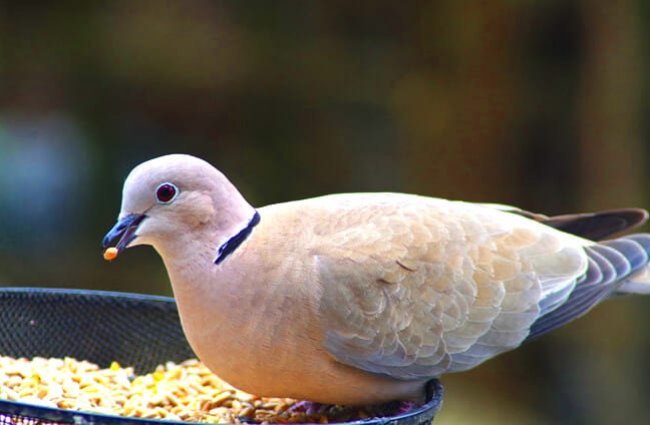
No, they’re not common pet birds only 3 per cent of bird parents keep doves. But they should be more popular, say experts. Here’s why: Docile and easy-going, doves love hanging out with their humans once they get used to them.
“They’re pretty happy if you just watch TV. They may want you to roll a little bell around to play with. Or they may want to just sit and get petted on the head,” she says. They’re perfect for people who want to keep birds as pets, but don’t (or can’t) invest the time it takes to care for a parrot, she says. And in her experience, they don’t bite, though she adds, “Every bird is different, with different personality and different family environment.”
Doves need a wide cage with several perches and they like bells, toys where they can pull strings (or pieces of hay), and swings,
For food, give your dove pellets that are specially formulated for doves, s “There are seed mixes but they tend to get calcium deficiencies with seed mixes.”
Also known as:
Just Doves—but a fun fact about these birds is that they’re closely related to pigeons.
Average lifespan:
About 10 years.
Talking ability:
They coo.
9. Finches
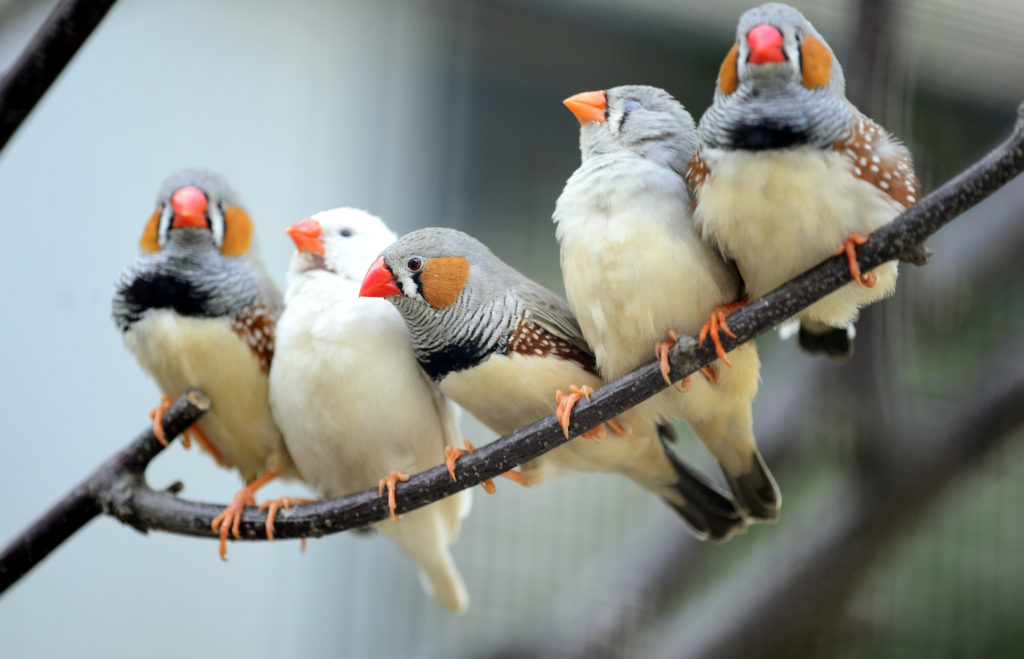
several small bowls for putting their food in so they can fly from bowl to bowl. The best foods for finches include pellet-based ones with some seeds mixed in, as well as greens like spinach, watercress and lettuce. And get two bowls of water, she says—one for bathing, one for drinking, both of which you should change daily.
Also known as:
The three most common types of finches are society, Gouldian and zebra.
Average lifespan:
About 10 years max.
Talking ability:
They don’t talk but they’re very vocal. “Their vocalization sounds like they’re gossiping about the humans. The beep, beep, beep, beep—I just think they’re very appealing in that way,” says Blanchette.
8. Pionus parrots
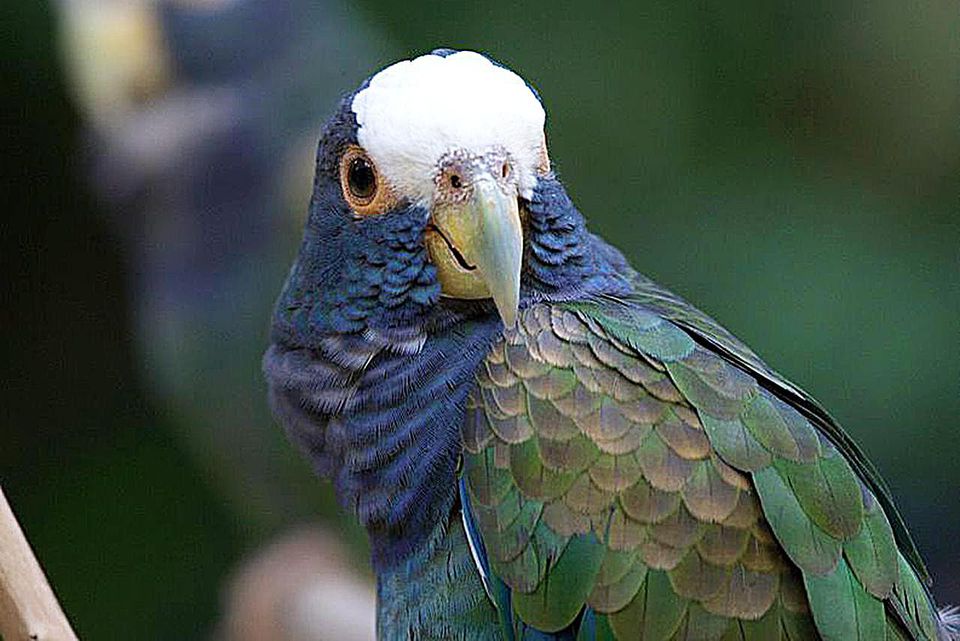
If your definition of small is somewhat bigger than the pint-sized parrotlet, then consider the pionus, which makes top 10 list Pets. Pionus parrots are medium-sized but still smaller than an Amazon or African grey. They’re not as noisy and are more easy-going with a sweeter disposition than Amazons.
“The blue-headed Pionus makes an excellent pet parrot for first-time bird parents. They are easy to care for, very loving, playful and they have a mellow temper. They can make great apartment birds.
“They love to learn”. “The bird needs something to do. They need training. It can be silly as playing soccer with your sock on the floor or taking a piece of a puzzle and putting it in the bowl. All of these things get this bird to think, and how to work in its environment.”
Feed your Pionus the way you would most other parrots: formulated diets containing mostly pellets and more vegetables, like leafy greens, than fruits. “I do find that the general population tends to equate fruit and vegetables as nutritionally equivalent and that doesn’t seem to be the case for birds. Vegetables are much more important than fruit in general because of the higher nutrient content, especially the calorie ratio”.
Also known as:
Red-vented parrots. There are eight species of Pionus, including the blue-headed and white-capped Pionus.
Average lifespan:
About 25-40 years
Talking ability:
They can learn to speak, though their verbalizations probably won’t be as showy as African greys or Amazons, Blanchette says.
7. Parrotlets
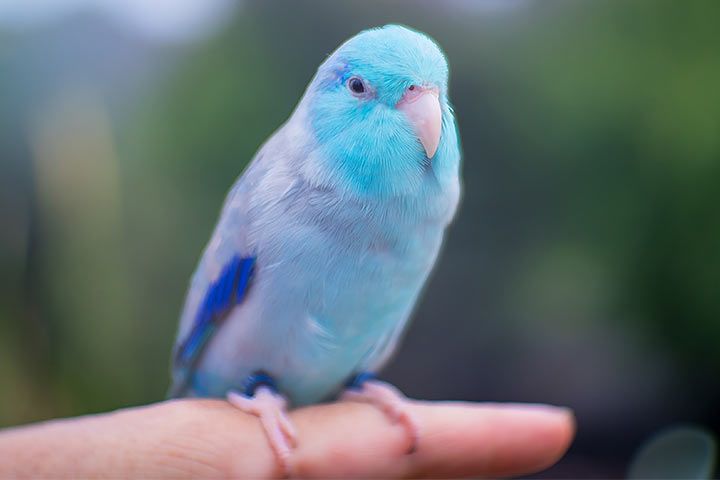
Smaller parrots tie with Amazons and African greys in terms of popularity, according to the APPA survey (all come in at 7 per cent). One type of small parrot is the parrotlet, which is even smaller than parakeets. Why is this small parrot on our list? Because parrotlets make for some of the best parrots for pets, especially if you are a first-time parent. While they may be tiny, parrotlets have big, charismatic personalities and can be trained to do all sorts of things, from stepping onto your finger to turning around or waving, she says.
Again, you’ll want to spend quality time with this bird, or else your pet parrotlet can pick at the bars of their cage, rip things apart in your house or pluck at their feathers. So, like all birds, get a roomy cage, put in plenty of interesting toys that are changed up weekly, and get up close and personal with your bird.
As with all parrots (and pet birds), you can supplement food pellets with vegetables (kale, spinach, broccoli florets) and fruits that are low in sugar, . Avoid fruits like apples, bananas and oranges for those that are higher in phytonutrients (like papayas and berries), she says.
Also known as:
Pocket parrots. There are several species, including the Pacific parrotlet and green-rumped parrotlet.
Average lifespan:
15 to 20 years
Social needs:
You can get one parrotlet or two. If you get two, the birds will probably bond more to each other than to you, Blanchette says.
Talking ability:
They can be taught to say words, but those words may not be crystal clear, says Blanchette. They’re not as noisy as other types of parrots, so maybe the perfect one for apartment dwellers.
6. Amazon Parrots
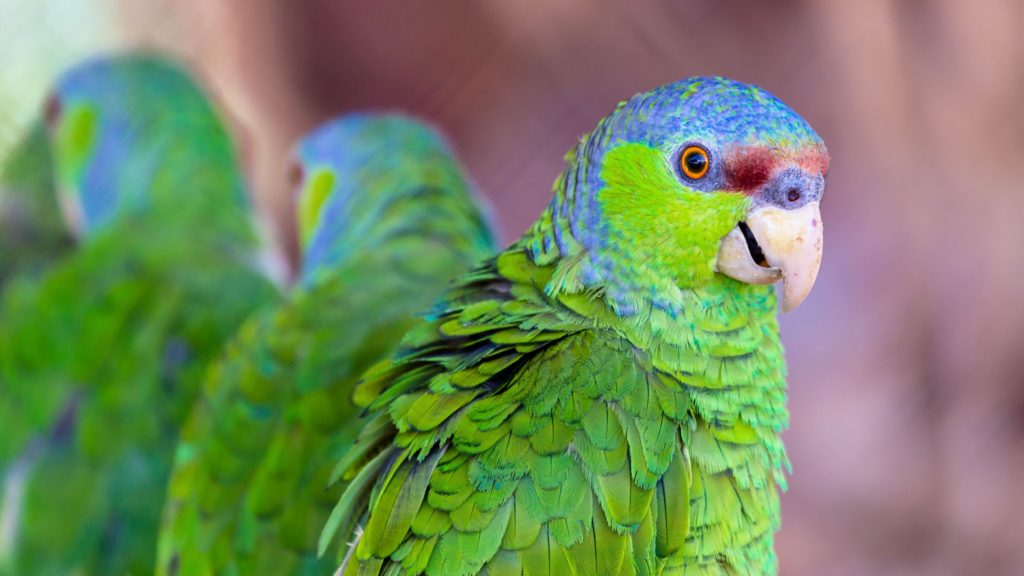
These medium-size pet parrots are gregarious, which may explain why they tie with the African grey in terms of popularity—7 per cent of bird parents have either an Amazon or an African grey, according to the APPA’s survey. These brightly coloured outgoing birds are good talkers as well.
Their parents can’t get enough of them. “We love our yellow-naped Amazons because they have so much character. They also have great body language—we know their moods pretty quickly. We were surprised at how affectionate and loving they are, yet we love how feisty they are and how specific their needs and wants are,” says Sunny Updegrove of Ohio, about her two pet parrots, Jalapeno and Miss Rocco.
To give these best pet birds their best lives, provide lots of social interaction, with mentally stimulating toys (foraging, shredding, puzzles) that are changed around weekly. Otherwise, your Amazon will get noisy and destructive because they’re bored.
with see-through canisters that you can fill with treats. It’s up to your parrot to figure out how to get them.
You also want to watch your pet bird’s diet (and exercise). “So many of them have obesity issues we have to limit even the pellets sometimes,”. To fill up your Amazon, give them as many vegetables as possible. When you do give your pet parrot fruit, go for ones that are low in sugar and high in nutrients—berries great choice, while grapes are not,
Also known as:
There are plenty of types of Amazons, including the yellow-naped and orange-winged Amazon.
Average lifespan:
40 to 50 years
Talking ability:
Among the best bird pets that can talk, Amazons are prized for their ability to pick up words and phrases.
5. African Greys
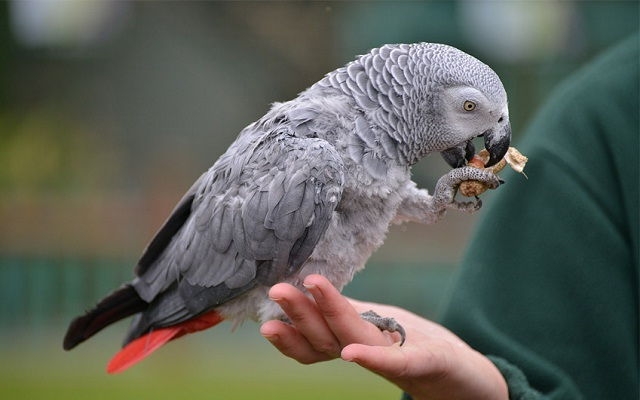
The most popular bird among adopters is the African grey, The reason: Of all the birds that can talk, the African grey is considered the best talker, which is what attracts people to own one. But besides their talking ability, , this medium-size parrot is super intelligent, charming and sociable, making it one of the best parrots for pets.
Ricky Lowrimore of Texas loves the way his African grey is both affectionate and independent. “Irma can astound me sometimes by answering my questions, then other times she can be like a baby and wants her way”.
Because they’re so smart, an African grey needs plenty of mental stimulation—foraging and puzzle toys that are stuffed with treats to find, shredding toys, lots of time with you.
“Boredom is a bird’s worst enemy. If they start getting bored, that’s when bad situations start to happen,” he explains, including shrieking, feather plucking, and aggressive behaviour. (It’s fun for your grey to watch you jump when they bite!) They also are addicted to their routine and hate even slight switch-ups,
feed a combination of pellets, vegetables and some fruits that are low in sugar and high in phytonutrients (such as papayas, berries and kiwis). Make sure your pet gets their omega-3s, too.
high quality, fresh grade walnuts in the shell. Let your bird crack the hull and get the meat out or crack it a little so she can get at the meat,”, who also recommends freezing walnuts so they don’t go rancid.
Also known as:
There are two types of greys, the Congo African grey (CAG) and the Timneh African grey (TAG).
Average lifespan:
Over 30 years
Talking abilities:
In a word, Wow-worthy. If your idea of the best pet bird includes the ability to speak and understand words and phrases, the African grey is your breed. “We have an African grey who’s a permanent resident at the shelter and after four years she still says new things I’ve never heard her say almost daily,” says Lewis. And while not all greys will talk, all of them will imitate the sounds they hear around the house—from the beeps of the smoke detector and microwave to a ringing phone—and repeat them all day long. If you’re sensitive to noise, “that can grate on the nerves in a hurry,” Lewis says.
4. Conures
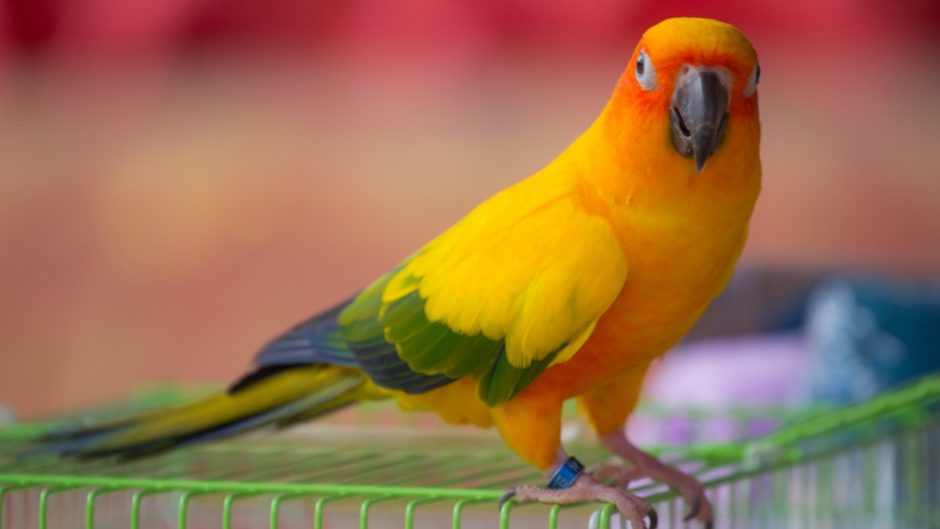
These birds also rank among the best parrots for pets, according to the 8 per cent of bird parents who have one. They come in all sizes and colours, from the smaller green-cheeked conure to the larger sun and blue-crowned conures.
Conures are crazy-smart, Like all parrots, conures require a daily routine and quality time, which means one-on-one interactions, Lewis says.
“You can turn just about anything into quality time, including laundry,” he adds. “If you’ve got that bird on your shoulder while you’re folding the laundry, he’s spending time with you, you’re talking to him, and he’s doing whatever he’s doing.”
When you’re away, make sure you have plenty of enrichment items—foraging toys and different things to rip up and chew—and the TV or radio on to keep your conure company, he says. Some birds are indifferent to it, but some love the noise.
If they get bored or don’t get enough attention, conures can screech.
“Generally, the bigger the conure is the noisier it is, and they have what is often termed as being like fingernails on a blackboard,” Lewis says.
They can also get aggressive and bite or be destructive. For that reason, they don’t make the best pet birds for beginners,
“I tend to be very particular on the fruits that I recommend—so not to give the high sugar, highly domesticated fruit but fruits with less sugar and more phytonutrients”.
Some examples include berries, especially wild blueberries, and kiwis, she says—and keep the portions small.
Also known as:
Conures (though there are many types)
Average lifespan:
Depends on the breed, but these pet parrots can live 20-plus years.
Talking abilities:
In general, conures aren’t known for their abilities to talk. “There are some that talk, some that talk more than others, and some who never say a word,” Lewis says.
3. Canaries
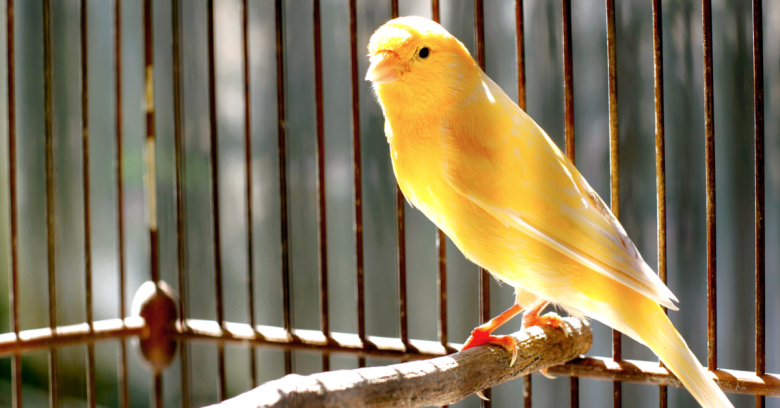
Ranking third on the list of best bird pets are canaries. These cheerful, good-natured songsters require low-key TLC—keep your canary’s cage in a room where you hang out and they’ll be happy. This is one reason why they are one of the best birds to have as pets.
You’ll want to get a cage that’s at least two- to three feet tall, so your canary has room to fly, Set up your perches at different heights and put a couple of water bowls (one for drinking and a larger, shallower one for bathing) and food bowls in the cage, she says. You can give your canary commercial pellets and vegetables like kale, spinach, and sweet potatoes to supplement, she says.
You might also want to take your canary out to fly around in the room—just cover windows and mirrors so they don’t crash. That provides exercise as well as mental stimulation.
Also known as:
Simply canaries—though there are several breeds, including the Harz Roller and the Red Factor Canary.
Average lifespan:
10 to 15 years
Talking abilities:
None—and the males are the ones with the gorgeous songs.
2. Cockatiels
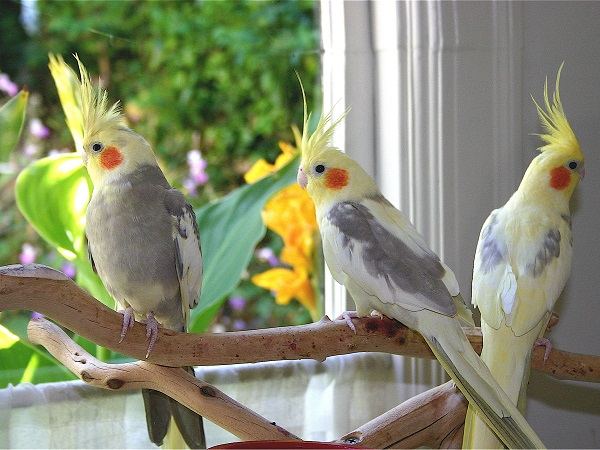
At 22 per cent, cockatiels rank just behind parakeets when it comes to the best birds for pets, according to their popularity in APPA’s survey. These pint-sized parrots are members of the cockatoo family, and their sunny, easy-going personalities score points with their parents.
Just be warned: “Cockatiels need things to do, When you’re away all day, get toys that can keep this smart bird entertained while they’re alone. These could include foraging and shredding toys, and be sure to change them up every week.
“Even if the same toys are there, and you rearrange them, the bird goes, ‘Something new!’ It’s exciting. (This is true for all types of pet birds but especially important for the parrots.)
You’ll also want a cage that’s roomy enough for your cockatiel to spread their wings, and they’ll also need perches of different types of materials. For instance, you could pair a rope perch and because cockatiels like to bathe in their water bowls, make sure you get a big-enough bowl and change it twice a day,
Also, keep bowls of food strategically placed throughout the cage. Feed your cockatiel mostly pellets, leafy greens (kale leaves, broccoli florets), and other vegetables like carrots (shredded or cut in strips). If you want to give your cockatiel seeds, try chia or flax seeds, which have omega-3s.
Pay attention to your bird’s body language too. If you’re training them to step out of their cage and they hiss and put their head down, you’re pushing too hard. If you ignore their signs, they may nip.
Also known as:
Miniature cockatoos, weeros, quarrions
Average lifespan:
10-15 years
Talking ability:
They can be trained to mimic sounds, so, yes, some can speak words or phrases, Blanchette says. But they also sing, whistle and make all sorts of noises—a vocal range worthy of one of the best birds to have as pets!
1. Parakeets
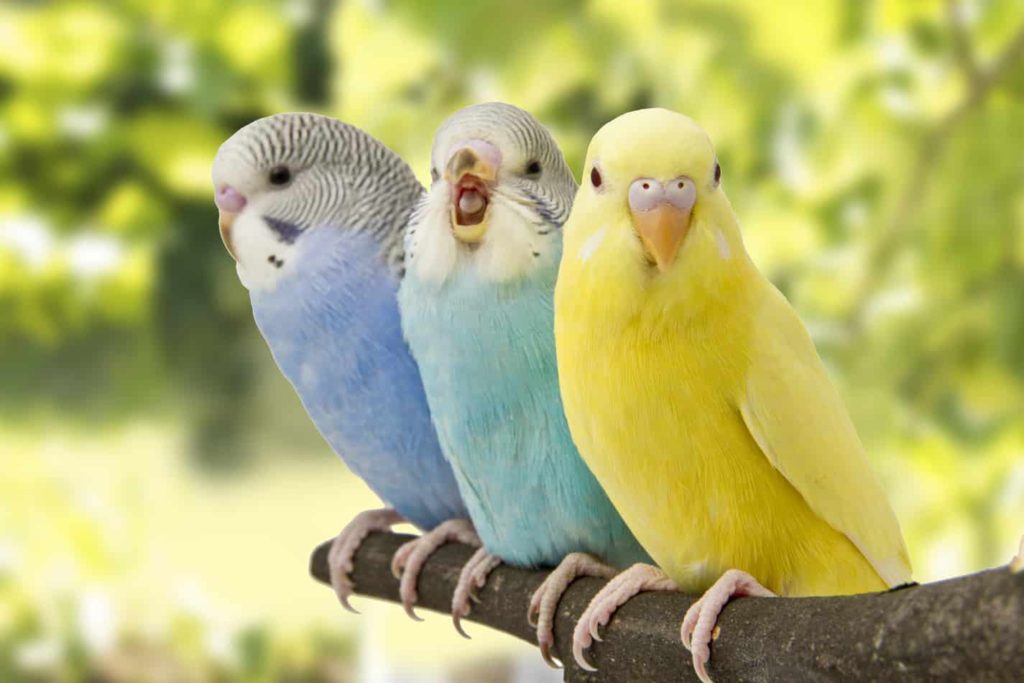
About 25 per cent of bird parents keep some type of parakeet, making this colourful breed the most popular pet bird among parents, according to the APPA. There are dozens of different breeds of parakeet, but the most popular by far is the budgerigar or budgie. And no wonder—they’re silly, sweet birds with big personalities that vary from bird to bird, says Blanchette. Pet parents also like their small stature: “Their size fits into almost any home. Their noise level is low, they do not damage furniture and their toys.
Another plus about playtime: “Budgies make the great company—they love to show off when they play.
If you want a more easy-going parakeet, get a lineolate parakeet (also known as a linnie or a barred parakeet or a Catherine parakeet). These are the solid-coloured birds who can be a little friendlier than the budgie.
Whatever parakeet you get, you want their cage to be wide enough to let your pet move around and get exercise. It should also be high enough so that your pet bird can fly up to the highest perch if they feel spooked.
Caring for your parakeet isn’t overly involved, another reason they are one of the best birds as pets. Parakeets need fresh water daily, and small bowls of food in the cage so they can fly from one to another, Blanchette says. Feed your parakeet pellets mixed with a few seeds as well as fresh veggies, like carrot strips or broccoli florets, she says, and you can also put cauliflower rice in your parakeet’s cage, she notes.
Also known as:
Budgies and linnies are the most common types, but there are dozens of other parakeet breeds.
Average lifespan:
10 to 15 years—but, says Blanchette, “it depends on nutrition, care, and exercise,” which is true for all pet birds
Talking ability:
Parakeets are among the best birds for pets, especially if you’re looking for bird breeds who can talk. Budgies are very chatty and will pick up human voices, learning words and phrases if you take your time training them.
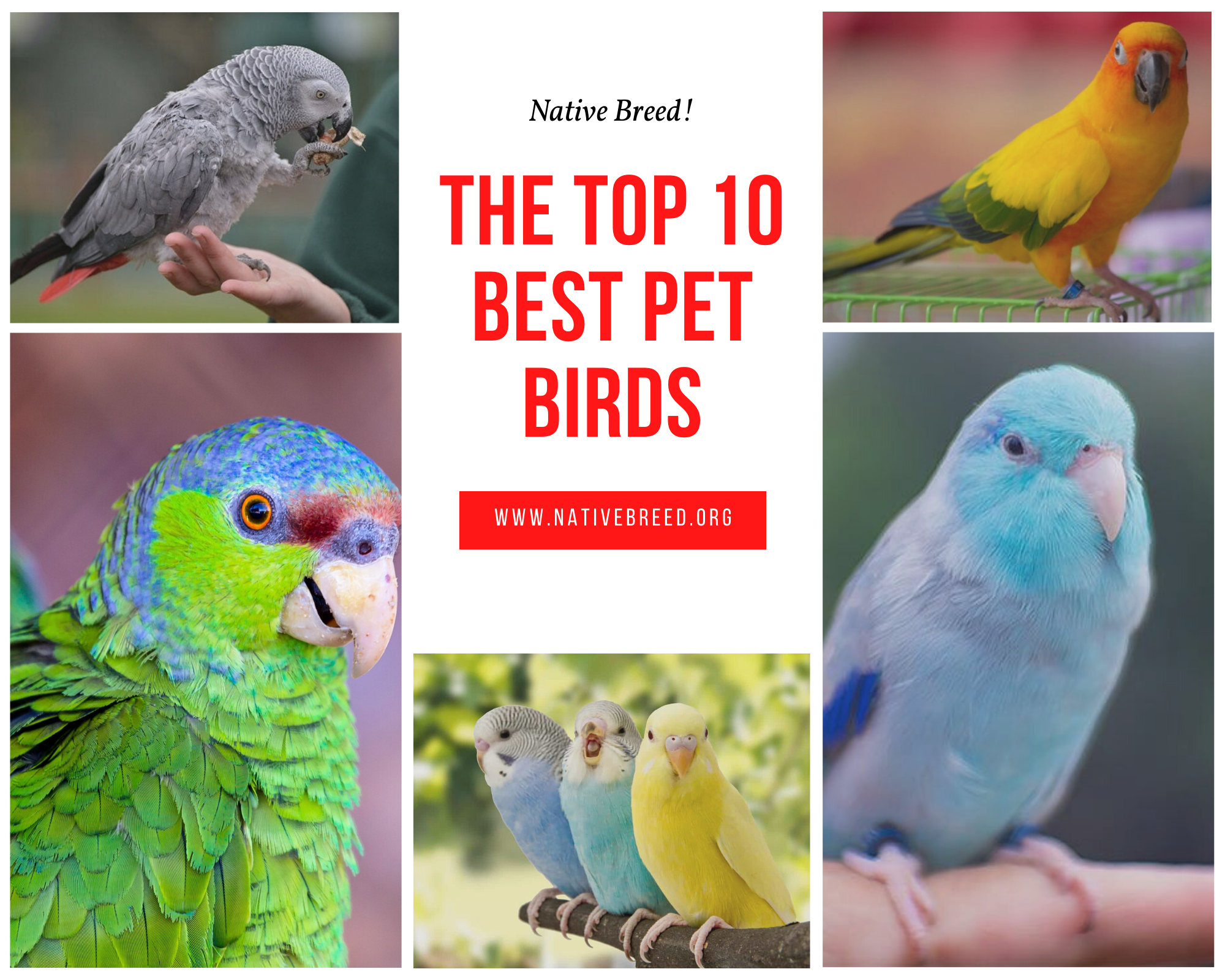
You are so right about parakeets. We have one and it is great as a pet bird.